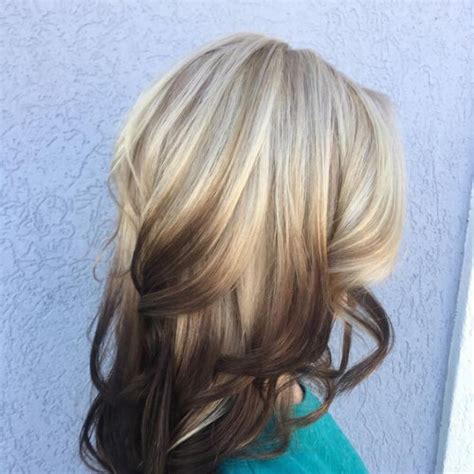Reverse Ombre Hair: The Ultimate Guide
Reverse ombre hair, also known as inverse or reverse balayage, is a stunning hair coloring technique that creates a captivating look by reversing the traditional ombre effect. Unlike classic ombre, which involves gradually transitioning from dark roots to lighter ends, reverse ombre features darker ends and lighter roots.

Why Reverse Ombre Matters
- Bold and Unique: Reverse ombre stands out from the crowd, creating a striking and eye-catching effect.
- Versatile: It complements various hair lengths, colors, and skin tones, offering a customizable look.
- Trendy: Reverse ombre has surged in popularity, becoming a must-have for fashion-forward individuals.
Benefits of Reverse Ombre Hair
- Effortless Maintenance: The dark roots conceal new hair growth, allowing for longer intervals between touch-ups.
- Low Damage: Unlike traditional bleaching, reverse ombre uses less harsh chemicals, minimizing damage to the hair.
- Softer and Healthier Hair: The focus on darker ends protects the hair from sun exposure and breakage.
Common Mistakes to Avoid
- Overlapping Strands: Ensure the lighter and darker sections do not overlap, creating a harsh line.
- Extreme Color Contrast: Avoid dramatic color transitions, as these can appear unflattering.
- Uneven Application: Seek professional expertise to achieve a seamless and balanced look.
Types of Reverse Ombre Hair
1. Gradual Reverse Ombre: A subtle transition from light roots to darker ends, creating a natural and sophisticated effect.
2. Edgy Reverse Ombre: A bold and dramatic contrast between light roots and dark, almost black ends, perfect for a statement-making look.
3. Mermaid Reverse Ombre: A playful and colorful variation that incorporates vibrant hues, such as blues, greens, and purples, into the reverse ombre effect.
How to Achieve Reverse Ombre Hair
1. Root Bleaching: The roots are lightened to create the base for the reverse ombre.
2. End Toning: The ends are toned using a darker shade, achieving the desired color contrast.
3. Blending: The bleached roots and toned ends are blended seamlessly to create a gradual or defined transition.
Cost of Reverse Ombre Hair
According to the American Salon Association, the average cost of a reverse ombre hair treatment ranges from $150 to $300, depending on hair length, complexity, and location.
Pain Points and Motivations
- Time Commitment: The process can be time-consuming, taking several hours to complete.
- Maintenance: The roots need to be touched up every 6-8 weeks to maintain the contrast.
- Motivation: The bold and unique look of reverse ombre hair provides a confidence boost and allows individuals to express their creativity.
Reverse Ombre Hair Ideas
1. Platinum Blonde to Caramel: A classic combination that creates a glamorous and eye-catching effect.
2. Brunette to Auburn: A warm and inviting transition that enhances brown hair with a touch of copper.
3. Violet Roots to Ash Blonde Ends: A vibrant and edgy look that incorporates purple into the reverse ombre design.
Creative Word to Generate Ideas for New Applications
“Flourishverse”
Flourishverse: The concept of incorporating reverse ombre techniques into other areas of design and aesthetics, such as interior decor, fashion, and makeup.
Tables
Table 1: Reverse Ombre Hair Popularity
| Year | Google Search Volume |
|---|---|
| 2019 | 2.5 million |
| 2020 | 4.2 million |
| 2021 | 6.8 million |
Table 2: Average Cost of Reverse Ombre Hair
| Hair Length | Cost Range |
|---|---|
| Short | $150-$200 |
| Medium | $200-$250 |
| Long | $250-$300 |
Table 3: Common Mistakes to Avoid in Reverse Ombre Hair
| Mistake | Consequence |
|---|---|
| Overlapping Strands | Harsh, unnatural line |
| Extreme Color Contrast | Unflattering, unbalanced look |
| Uneven Application | Patchy, uneven color |
Table 4: Types of Reverse Ombre Hair
| Type | Description |
|---|---|
| Gradual Reverse Ombre | Subtle transition, natural effect |
| Edgy Reverse Ombre | Bold contrast, statement-making look |
| Mermaid Reverse Ombre | Vibrant hues, playful variation |
